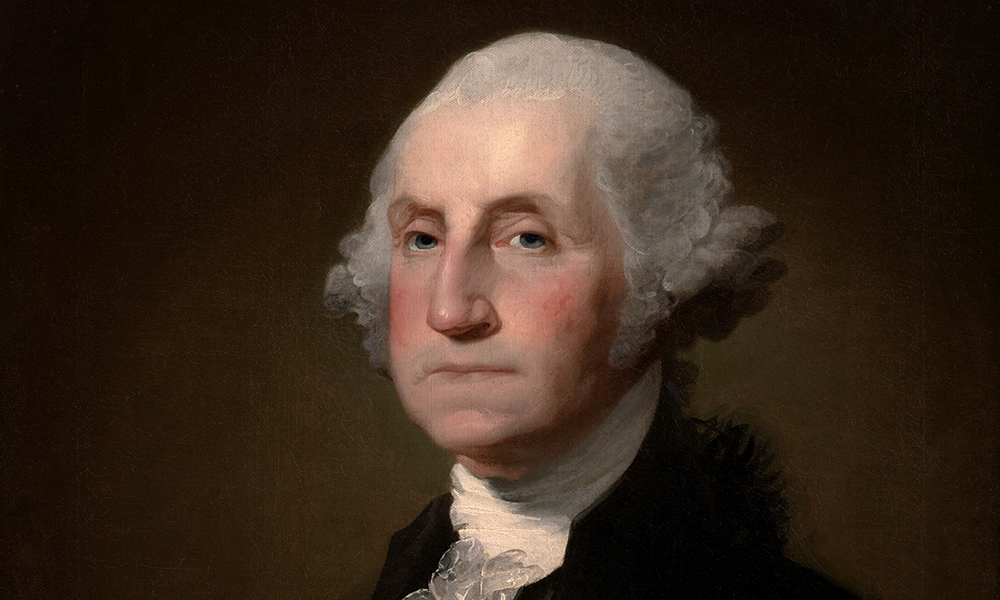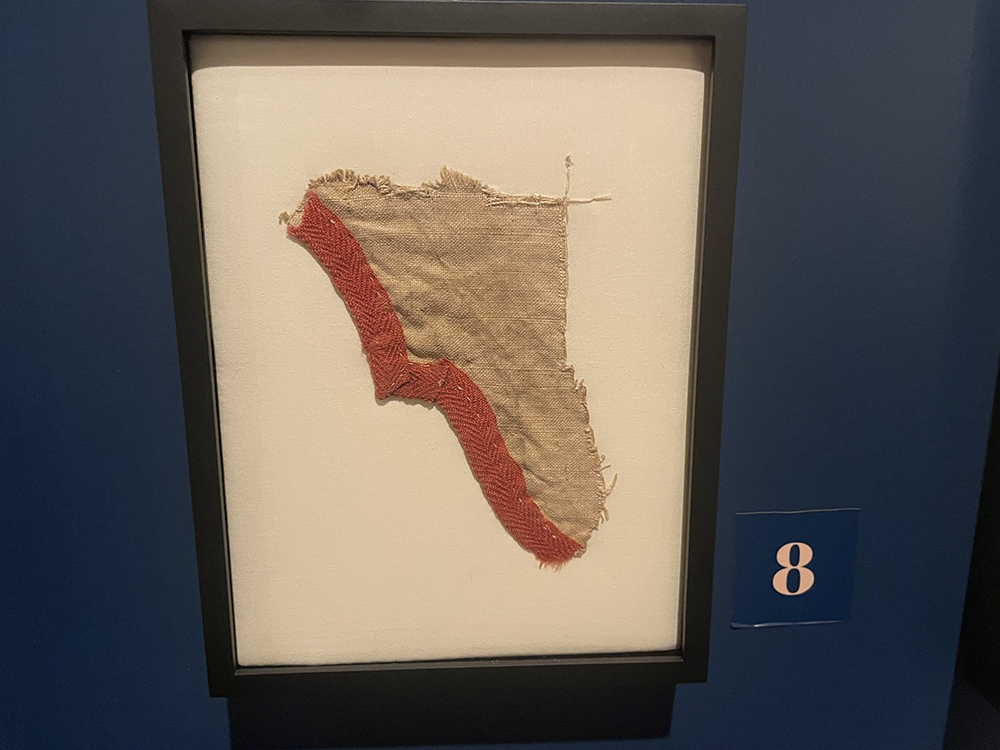
寻宝者经常在Goodwill上捡漏,但很少有人像理查德·“德纳”·摩尔一样幸运。
这位历史爱好者在该二手商店的在线网站上购买了一块帐篷碎片,来自乔治·华盛顿在美国独立战争期间用过的一个帐篷。摩尔为其支付了1,700美元。它的实际价值可能高达数万美元。
摩尔在2022年最先发现了这块帐篷碎片,在拍卖清单中标记这块碎片属于华盛顿。随附的一份书面说明称,这个帐篷曾经是弗吉尼亚州詹姆斯敦创建300周年纪念展览的一部分。摩尔最初表示怀疑,因为他清楚市场上赝品泛滥,但在仔细观察之后,他决定赌一把。
虽然他非常自信地出价1,700美元,但他却没有信心告诉妻子,因此他把碎片藏在了家里。后来,妻子原谅了他。
在拍卖成功后,摩尔在2月联系到费城美国革命博物馆(Museum of the American Revolution),以确定这块碎片是否是真品。事实证明这确实是真品。而且它似乎来自华盛顿用餐的一个帐篷。(这个帐篷的其他部分现藏于史密森尼博物馆(Smithsonian),但目前未对外展出。)

后来摩尔将这块帐篷碎片租借给美国革命博物馆,后者在今年2月将其对外展出。(该博物馆持续展出华盛顿在战时用过的帐篷。)
虽然将一件历史文物切碎的想法现在让人觉得不可思议,例如华盛顿的帐篷,但200年前,一个名为乔治·华盛顿·帕克·卡斯蒂斯的男子(玛莎·华盛顿曾孙女的父亲),开始将华盛顿的帐篷剪成碎片,作为纪念品,也是为了让人们能够直接与历史产生联系。虽然这块碎片是在后期被从帐篷上剪下来,但博物馆的官员认为,剪下它可能也是出于同样的原因。
这块碎片将在费城博物馆展览至2025年1月5日,届时它将被归还给摩尔。摩尔是美国目前已知的唯一一位拥有华盛顿帐篷碎片的私人收藏者。(财富中文网)
译者:刘进龙
审校;汪皓
寻宝者经常在Goodwill上捡漏,但很少有人像理查德·“德纳”·摩尔一样幸运。
这位历史爱好者在该二手商店的在线网站上购买了一块帐篷碎片,来自乔治·华盛顿在美国独立战争期间用过的一个帐篷。摩尔为其支付了1,700美元。它的实际价值可能高达数万美元。
摩尔在2022年最先发现了这块帐篷碎片,在拍卖清单中标记这块碎片属于华盛顿。随附的一份书面说明称,这个帐篷曾经是弗吉尼亚州詹姆斯敦创建300周年纪念展览的一部分。摩尔最初表示怀疑,因为他清楚市场上赝品泛滥,但在仔细观察之后,他决定赌一把。
虽然他非常自信地出价1,700美元,但他却没有信心告诉妻子,因此他把碎片藏在了家里。后来,妻子原谅了他。
在拍卖成功后,摩尔在2月联系到费城美国革命博物馆(Museum of the American Revolution),以确定这块碎片是否是真品。事实证明这确实是真品。而且它似乎来自华盛顿用餐的一个帐篷。(这个帐篷的其他部分现藏于史密森尼博物馆(Smithsonian),但目前未对外展出。)
后来摩尔将这块帐篷碎片租借给美国革命博物馆,后者在今年2月将其对外展出。(该博物馆持续展出华盛顿在战时用过的帐篷。)
虽然将一件历史文物切碎的想法现在让人觉得不可思议,例如华盛顿的帐篷,但200年前,一个名为乔治·华盛顿·帕克·卡斯蒂斯的男子(玛莎·华盛顿曾孙女的父亲),开始将华盛顿的帐篷剪成碎片,作为纪念品,也是为了让人们能够直接与历史产生联系。虽然这块碎片是在后期被从帐篷上剪下来,但博物馆的官员认为,剪下它可能也是出于同样的原因。
这块碎片将在费城博物馆展览至2025年1月5日,届时它将被归还给摩尔。摩尔是美国目前已知的唯一一位拥有华盛顿帐篷碎片的私人收藏者。(财富中文网)
译者:刘进龙
审校;汪皓
Treasure hunters regularly comb Goodwill, hunting for bargains, but few get as lucky as Richard “Dana” Moore.
The history buff purchased a tent fragment on the thrift store’s online site that was part of one of the tents used by George Washington in the Revolutionary War. Moore paid $1,700 for the scrap. It could be worth tens of thousands of dollars.
The tent fragment was labeled as belonging to Washington in the listing, which Moore first spotted in 2022. A written note accompanying it said the tent had been part of a display that commemorated the 300th anniversary of the founding of Jamestown, Virginia. Moore was skeptical, aware of the high number of fakes on the market, but after a closer look, decided to make the gamble.
He was confident enough to bid $1,700, but says he wasn’t confident enough to tell his wife—and hid the fragment in their home. She has since forgiven him.
After winning the bid, Moore got in touch with Philadelphia’s Museum of the American Revolution the following February to determine if the fragment was authentic. Turns out it was. Specifically, it appeared to be part of the dining tent Washington used. (The rest of the tent is in the Smithsonian collection, but is not on display at present.)
Moore has since loaned the tent clipping to the Museum of the American Revolution, which put it on display in February of this year. (The museum has an ongoing exhibit about Washington’s War Tents.)
While the idea of cutting up a piece of history like Washington’s tent now is unthinkable, 200 years ago a man named George Washington Parke Custis (the father of Martha Washington’s great granddaughter) began cutting away pieces of Washington’s tent as souvenirs and a way to directly connect people with history. This fragment was cut later, but museum officials theorize it could have been for the same reason.
The fragment will remain with the Philadelphia museum until Jan. 5, 2025, when it will be returned to Moore, who is the only known private owner of a piece of one of Washington’s tents in the U.S.






